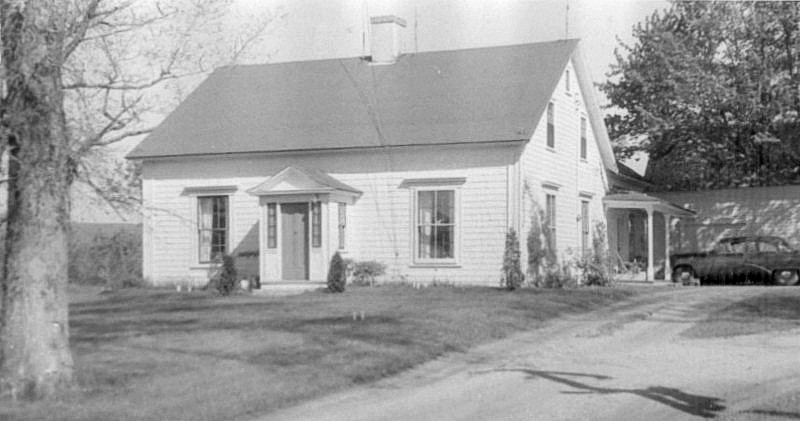
5543 Highway 201: The Edward Manning Morse House
5543 Highway 201: The Edward Manning Morse House
Architecture Style: Vernacular
Built: c. 1830
Edward Manning Morse was named after a much-admired man of his time. Edward and his brother James Manning were prominent in the Baptist work in Nova Scotia, which absorbed hundreds of new converts from the fervent “New Light” movement. The New Light emphasis on individual conversion and responsibility was welcome; the Planters rejected New England’s heritage of theocracy (the rule of God imposed on all), recalling such abuses as the Salem witch trials of 1692. But they did want standards. Early Baptist life, with its revivalism and community discipline, was a good compromise for Mannings and Morses alike, and for many who followed them.
This home was built on land deeded in 1830 to Edward by his father, Aaron Morse, son of Planters Samuel and Lydia [Church] Morse, in 1830. The house may have been there, a home for Aaron and first, Eleanor [MacGregor], second, Frances [Farnsworth] Troop Manning, James’ Manning’s widow. Edward and Mary Anne [Bishop] named their son (Edward) Manning. He married the brilliant Caroline Wentworth, who came from Mt. Holyoke Seminary at South Hadley, MA, and established a seminary in Clarence. On her marriage, she moved it here. In the 1860s, pupils sat on benches in the outbuilding, (crisper and fresher then) east of the house, and learned Virgil’s Aeneid, Milton’s Paradise Lost, French conversation, rhetoric, math, physiology, drawing, and music. Barnaby, Bent, Chesley, Daniels, Elliott, Longley, Morse, Sanders, and Starratt children knew “scenes of love and friendship”, as the closing exercises called their time together.
His second wife was Lucretia Croscup Delap, widow of the sea captain, Israel Delap, who died on the west coast of Africa of yellow fever in 1891. His dairies survived and were brought to this house when Lucretia and her daughter, Mary Amelia, came. The house passed to Mary A. and Harry O. Bent. In the next generation, Harold and Mary Beattie moved in after Harry died to help Mary Amelia. The Beatties’ three daughters, Susan, Elsa, and Lorraine, grew up here. They were gifted and enriched the community.
Jane Racine, a fine watercolour artist, created a studio in the “kitchen chamber”. So many gifted women have lived here, and for countless children, women, and men, it has indeed been a place for “scenes of love and friendship.”
| Owners | |
|---|---|
| Morse, Manning | 1830-1849 |
| Morse, Edward Manning | 1849-1899 |
| Shafner, Charles | 1899-1899 |
| Morse, Lucretia | 1899-1906 |
| Bent, Mary Amelia | 1906-1945 |
| Fryers, Edith M/Ernest | 1945-1947 |
| Bent, Mary A. | 1947-1952 |
| Beattie, Mary L. | 1952-1970 |
| Wills, Robert/Dorothy | 1970-1979 |
| Clarey, Gordon/Murna | 1979-1989 |
| McConnell, Kimberly | 1989-1990 |
| Coulter, Jan M/Racine, Jane E. | 1990-1995 |
| Racine, Jane E. | 1995-2005 |
